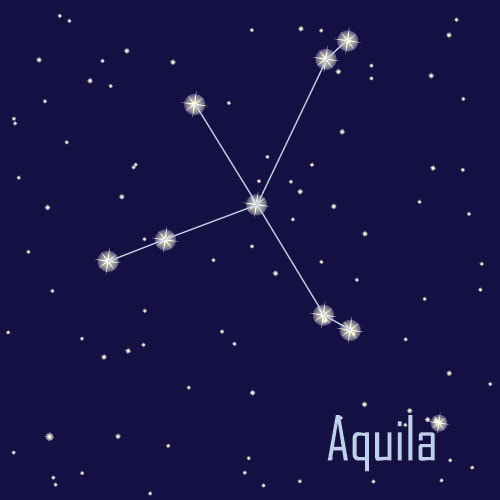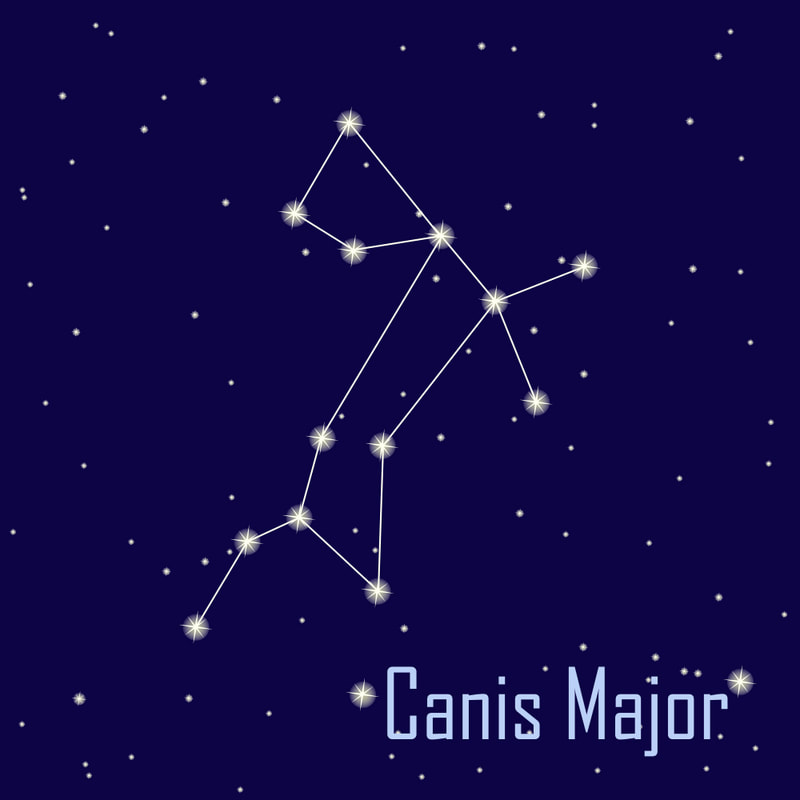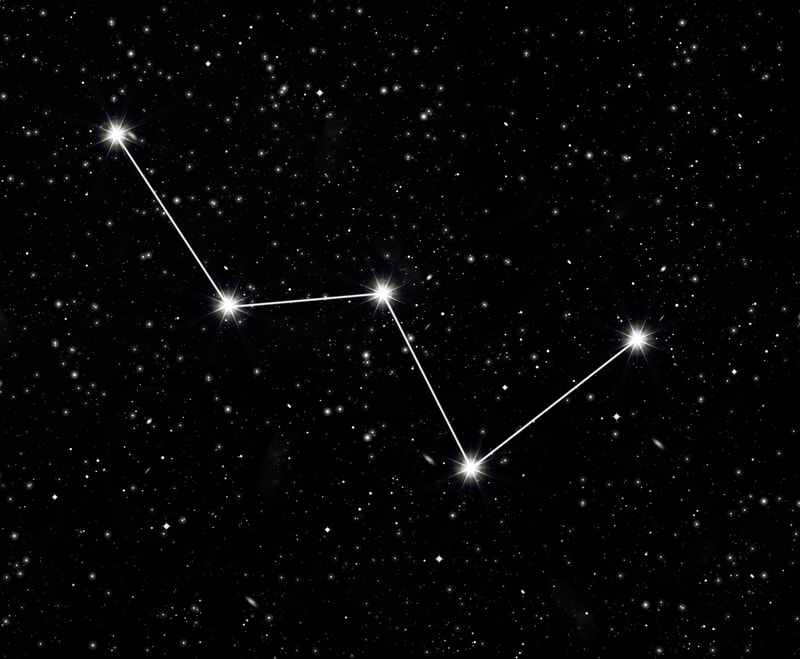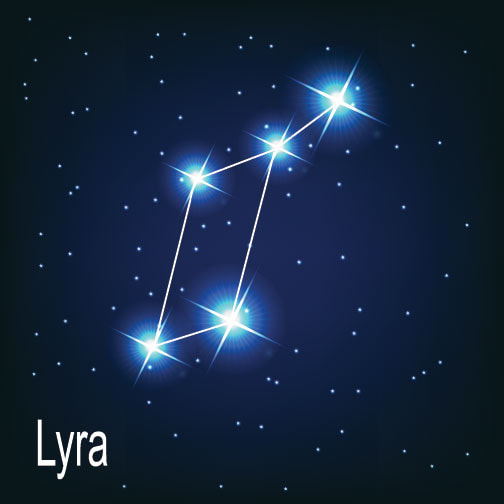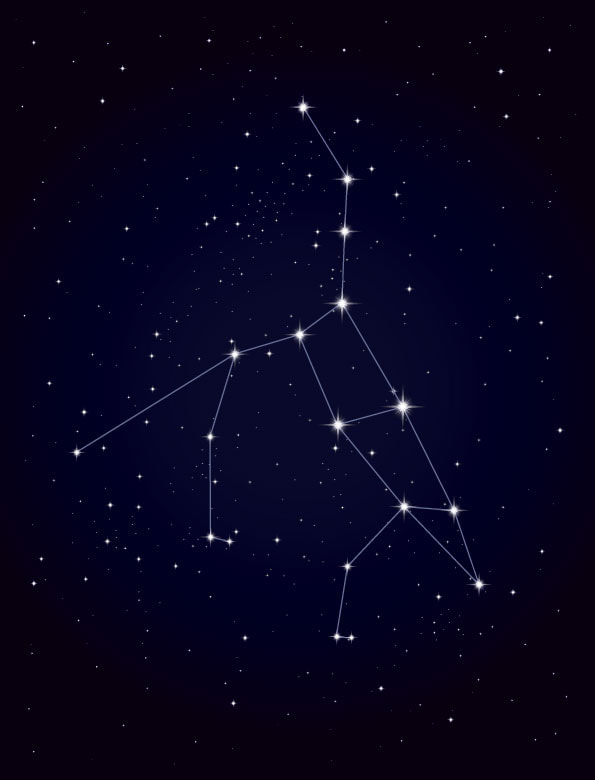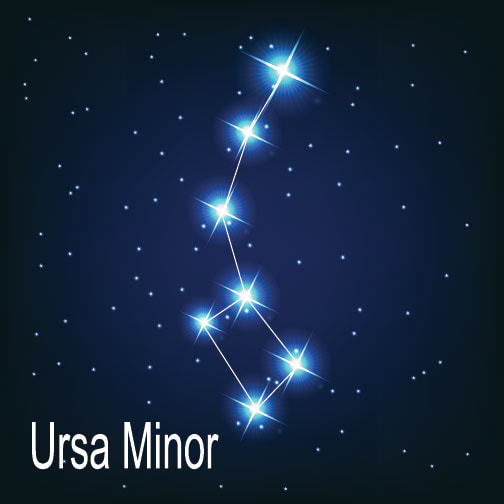Identifying the constellations
There are 88 constellations. In this section, we’ve identified some popular constellations, and given you instructions on how to find them in the night sky. There is also information on when they are most easily seen from the northern hemisphere. Please note that in the next section about the zodiac, you’ll also learn how to identify the zodiac constellations.
There are 88 constellations. In this section, we’ve identified some popular constellations, and given you instructions on how to find them in the night sky. There is also information on when they are most easily seen from the northern hemisphere. Please note that in the next section about the zodiac, you’ll also learn how to identify the zodiac constellations.
Aquila’ is often thought of as a bird, but which type varies according to different cultures. Romans considered the constellation to show a vulture, while in India it is considered to be the half-eagle, half-man god, Garuda. The Greeks considered it to be an eagle. Indigenous Australians consider the main star Eaglehawk, the great man, and the stars either side to be his wives, the black swans.
The constellation takes on the shape of a bird with its wings spread wide. Its brightest star, Altair, is near the point where the head would be, and this is the easiest part to see. From there it makes a line of three stars either side, to form the wings.
Aquila lies in the northern skies, close to the celestial equator. It is most easily seen in September. To find Aquila, it is easiest to identify Altair on the eastern side of the Milky Way, and then to identify the rest of the eagle’s body.
The constellation takes on the shape of a bird with its wings spread wide. Its brightest star, Altair, is near the point where the head would be, and this is the easiest part to see. From there it makes a line of three stars either side, to form the wings.
Aquila lies in the northern skies, close to the celestial equator. It is most easily seen in September. To find Aquila, it is easiest to identify Altair on the eastern side of the Milky Way, and then to identify the rest of the eagle’s body.
Canis Major
Canis Major is the Latin for ‘greater dog’, and is a constellation found in the celestial southern hemisphere. It contains the star Sirius, explaining why this star, the brightest in the sky, is known as ‘the dog star’.
The constellation was thought of as a dog in Greek mythology, and in medieval Arabic astronomy. In other cultures, this constellation has been included in larger constellations, or recognized in and of itself, and likened to bird, bats and snakes.
Canis Major is in the shape you might expect the skeleton or a stick drawing of a dog to have, with a long midsection and four limbs. It is easiest to recognize Sirius, which is where you might expect the neck of the dog to be. From there two ‘limbs’ branch out at either side, and the ‘back’ descends through two stars, before two more ‘limbs’ jut out from this point at diagonal angles.
It is best seen in February.
Canis Major is the Latin for ‘greater dog’, and is a constellation found in the celestial southern hemisphere. It contains the star Sirius, explaining why this star, the brightest in the sky, is known as ‘the dog star’.
The constellation was thought of as a dog in Greek mythology, and in medieval Arabic astronomy. In other cultures, this constellation has been included in larger constellations, or recognized in and of itself, and likened to bird, bats and snakes.
Canis Major is in the shape you might expect the skeleton or a stick drawing of a dog to have, with a long midsection and four limbs. It is easiest to recognize Sirius, which is where you might expect the neck of the dog to be. From there two ‘limbs’ branch out at either side, and the ‘back’ descends through two stars, before two more ‘limbs’ jut out from this point at diagonal angles.
It is best seen in February.
Cassiopeia was named after a queen in Greek mythology, a vain woman who boasted about her beauty. In these myths, she was said to have been punished for saying she was more beautiful than the sea nymphs by being forced to circle the North Pole.
In other cultures, Cassiopeia is often among a larger group of stars. The people of the Marshall Islands included it in a large porpoise constellation, while in Arab astronomy, it was part of both ‘The Tinted Hand’ constellation, and ‘The Camel’.
It is very easy to identify, as either an ‘M’ or ‘W’ shape, made up of five bright stars. Whether it is an M or W depends on your location and season. It is best seen in November.
In other cultures, Cassiopeia is often among a larger group of stars. The people of the Marshall Islands included it in a large porpoise constellation, while in Arab astronomy, it was part of both ‘The Tinted Hand’ constellation, and ‘The Camel’.
It is very easy to identify, as either an ‘M’ or ‘W’ shape, made up of five bright stars. Whether it is an M or W depends on your location and season. It is best seen in November.
Cygnus
The constellation Cygnus is a swan, and is one of the most easily recognizable constellations. It includes the Northern Cross, a large cross shape which looks rather like a crucifix with an elongated horizontal span.
It is a large constellation, which makes it easier to see. It is also easily located by its neighbors, which include Lyra at the west, Pegasus at the south east, and Lacerta at the east. Cygnus is best seen in September.
The constellation Cygnus is a swan, and is one of the most easily recognizable constellations. It includes the Northern Cross, a large cross shape which looks rather like a crucifix with an elongated horizontal span.
It is a large constellation, which makes it easier to see. It is also easily located by its neighbors, which include Lyra at the west, Pegasus at the south east, and Lacerta at the east. Cygnus is best seen in September.
Lyra is best seen in August, but it not one of the easiest constellations to identify. The name of the constellation comes from the Greek myth of Orpheus, and this constellation represents his lyre, the first lyre ever made. With it, Orpheus produced music so beautiful that it could charm inanimate objects such as rocks, and overpowered the dangerous voices of the Sirens in Jason and the Argonauts.
To identify this constellation, the first star to identify is Vega. This is the brightest star, and also the most well known. It is often the second brightest star in the northern hemisphere.
To identify this constellation, the first star to identify is Vega. This is the brightest star, and also the most well known. It is often the second brightest star in the northern hemisphere.
Orion is one of the easiest to identify constellations. It is located on the celestial equator, which makes it visible throughout the world, though it is best seen in January from the northern hemisphere. It includes a blue-white supergiant, and a red supergiant, which makes it very easily identifiable. To find Orion, look for its seven brightest stars. These form an hourglass-shaped pattern, with four forming an outside rectangle and three at the center.
The name comes from Orion, a hunter from Greek mythology. Going down from the belt is a smaller line of three stars, which form Orion’s sword.
The name comes from Orion, a hunter from Greek mythology. Going down from the belt is a smaller line of three stars, which form Orion’s sword.
Ursa Major
Ursa Major, or ‘the great bear’, is the third largest constellation, and is one of the best known in the western word. Visible throughout the year in the majority of the northern hemisphere, it is best seen in April.
To begin identifying Ursa Major, first look for the ‘Big Dipper’, also known as the ‘Wagon’ or the ‘Plough’. This is a group of seven bright stars which form a scooping shape such as a ladle. This is the top of Ursa Major, which represents the tail and hindquarters of the bear.
Ursa Major, or ‘the great bear’, is the third largest constellation, and is one of the best known in the western word. Visible throughout the year in the majority of the northern hemisphere, it is best seen in April.
To begin identifying Ursa Major, first look for the ‘Big Dipper’, also known as the ‘Wagon’ or the ‘Plough’. This is a group of seven bright stars which form a scooping shape such as a ladle. This is the top of Ursa Major, which represents the tail and hindquarters of the bear.
Ursa Minor, or the ‘lesser bear’ or ‘smaller bear’, even the Little Bear, is similar to Ursa Major. The constellation is formed by the Little Dipper, which has seven stars formed into a ladle or plough shape, as with the Big Dipper. However, in this constellation, one of the stars is above the ‘bowl’ of the ladle, creating the body of the little bear.
The brightest star in the constellation is Polaris, which marks the end of the tail of the Little Bear. Identify this star first. This constellation is most easily seen in June.
<<<<<<<Astronomy
The brightest star in the constellation is Polaris, which marks the end of the tail of the Little Bear. Identify this star first. This constellation is most easily seen in June.
<<<<<<<Astronomy

